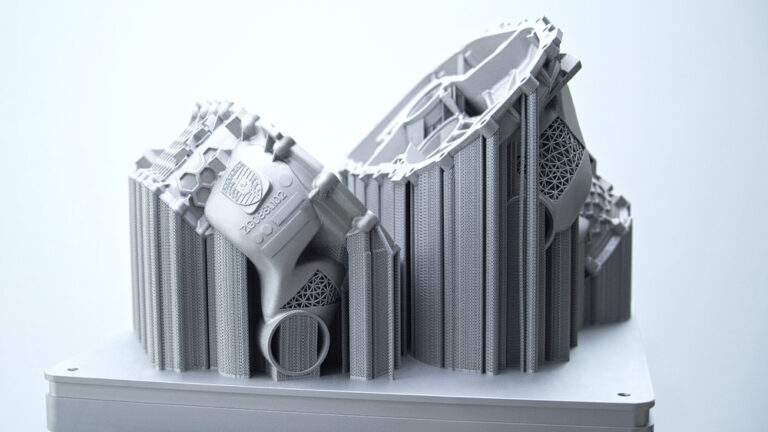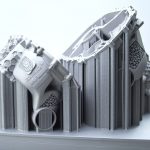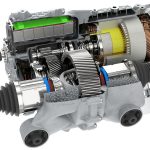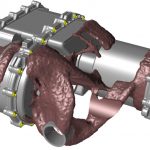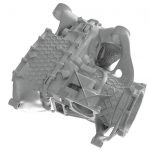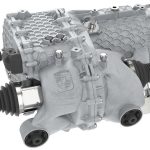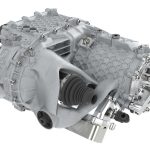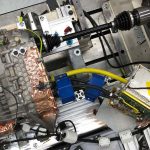Porsche says it has successfully produced an electric motor and drive housing using additive manufacturing. “This proves that additive manufacturing with all its advantages is also suitable for larger and highly-stressed components in electric sports cars,” said Falk Heilfort, project manager in the Powertrain Advance Development department at the Porsche Development Centre in Weissach. Porsche states that the optimized electric drive could be used in a limited-edition sports car.
The company notes that its engineers were able to carry out several development steps at once with the prototype. It states that the additively manufactured alloy housing is lighter weight than a conventionally cast part, and reduces the overall weight of the drive by approximately 10 percent. Thanks to special structures that have only become possible due to additive manufacturing, the stiffness in highly stressed areas has nevertheless been doubled.
“Our goal was to develop an electric drive with the potential for additive manufacturing, at the same time integrating as many functions and parts as possible in the drive housing, saving weight and optimizing the structure,” explained Heilfort. The drive housing was manufactured from high-purity metal powder using a laser metal fusion process (LMF).
Porsche explains that optimization of the electric drive started with the design integration of components such as bearings, heat exchangers and oil supply. This was followed by the computer-calculated definition of loads and interfaces which were then used to calculate load paths. The next step in the virtual development method was optimization of the load paths by integrating the so-called lattice structures. “We were able to expand and improve our software solutions and methods for creating such parts and are now able to virtually implement them in a very short space of time,” noted Sebastian Wachter, specialist in design methodology and topology optimization in the Powertrain Advance Development department.
However, Porsche notes that the extended design freedom offered by additive manufacturing also goes hand-in-hand with specific design requirements. For example, its engineers had to take into account the fact that the work pieces are produced layer by layer. Thus, if there are large overhangs, supporting elements such as ribs needed to be incorporated. This meant it was important to take into account the direction in which the layers would be built up early in the design phase.
With the machine technology currently available, Porsche says printing of the first housing prototype took several days and had to take place in two build processes due to the component size. With the latest machine generations, it says it would be possible to reduce this time by 90 percent, and the entire housing could be manufactured in a single process.
Porsche claims that the weight of the housing parts were reduced by approximately 40 percent due to the integration of functions and optimization of the topology. It points out that stiffness was increased significantly at the same time. Despite a continuous wall thickness of only 1.5 mm, the stiffness between the electric motor and the gearbox was increased by 100 percent due to the use of lattice structures.
The company explains that the use of these honeycomb structures reduces the oscillations of the thin housing walls and thus considerably improves the acoustics of the drive as a whole. The integration of parts made the drive unit more compact, significantly improved the drive package, and reduced the assembly work by around 40 work steps. This equates to a reduction in the production time of approximately 20 minutes. An additional benefit was that the integration of the gearbox heat exchanger into the housing, with optimized heat transmission paths, improved the cooling of the drive as a whole.

